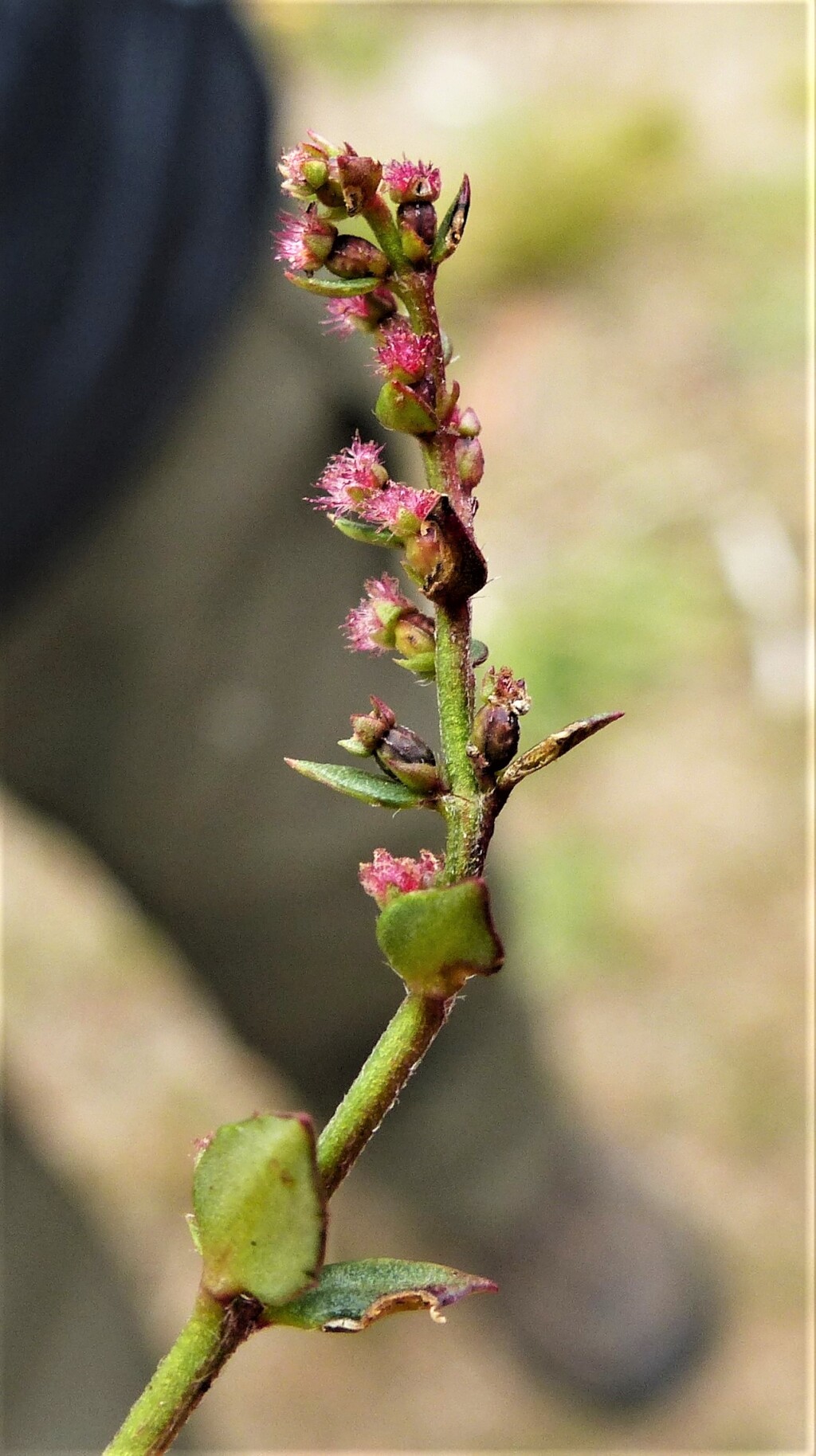Gonocarpus montanus
(Hook.f.) Orchard Mat RaspwortPerennial herb, procumbent or ascending, 10–15 cm tall; stems 4-angled, sparsely pilose with short appressed hairs. Leaves opposite, ovate to ovate-lanceolate, 3.5–10 mm long, 2–6 mm wide, glabrous or sparsely pilose basally, coriaceous, margins thickened, with 4–6 teeth; petiole 1–3 mm long; bracts opposite, becoming alternate, lanceolate, 2–4 mm long; bracteoles lanceolate, 0.8–1.5 mm long, red-brown, margins entire. Pedicel 0.2–0.5 mm long; sepals 0.9–1 mm long, margins thickened, basal callus weak; petals 1.5–1.8 mm long; stamens 4, opposite sepals, staminodes 4, c. 0.5 mm long, opposite petals, anthers 0.8–1.2 mm long; ovary ovoid, 1–1.5 mm long, silver-grey to reddish-purple, 8-ribbed, often with 2 oblique calluses between ribs, glabrous. Fruit 1.5–1.6 mm long, silver-grey. Flowers Nov.–Feb.
GGr, EGU, HSF, HNF, MonT, HFE, VAlp. Also NSW, ACT, Tas. New Zealand. Confined in Victoria to open areas in alpine and subalpine habitats in the east with an isolated western occurrence on Mt William in the Grampians.
This species has been confused with Gonocarpus serpyllifolius but can be distinguished by its more robust habit, generally larger, thicker leaves and non-shiny fruit.
Jeanes, J.A. (1996). Haloragaceae. In: Walsh, N.G.; Entwisle, T.J., Flora of Victoria Vol. 3, Dicotyledons Winteraceae to Myrtaceae, pp. 887–908. Inkata Press, Melbourne.
 Spinning
Spinning


